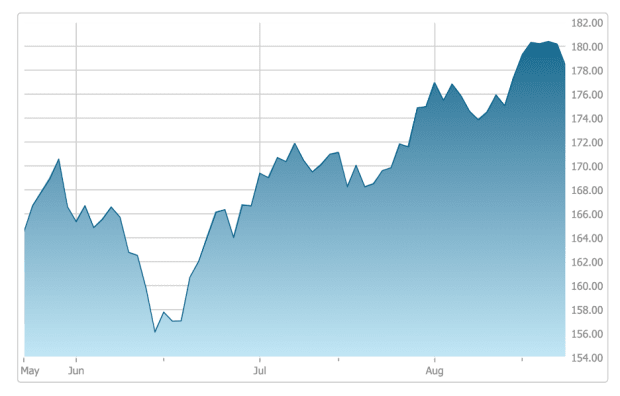
Jiradelta from GettyImages; Canva
What Is Momentum Investing?
Every investor knows that it is all but impossible to time the market, particularly during periods of increased volatility. However, there can be ways to ride the wave of positive sentiment associated with a stock, a sector, or even the market as a whole. This practice is known as momentum investing.
While the principle behind value investing is “buy low and sell high,” one might say momentum investors “buy high and sell even higher.” Investors then take any profits from their winners, sell their losers, and repeat the process with the next trending opportunity.
The concept of momentum investing is largely attributed to fund manager Richard Driehaus, who had $13.2 billion of assets under management upon his death in 2021. Driehaus described his strategy by saying that “the momentum investor has confidence that a stock that is high can head even higher. We rarely invest in stock because it's cheap and hope for a turnaround."
How and Why Does Momentum Investing Work?
There are several factors at play when considering momentum investing—after all, the very definition of momentum is the strength gained by an object in motion. Therefore, momentum is a continuous process. It differs from buy-and-hold investing because momentum investors spot opportunities from short-term trends, like news events, earnings reports, or other factors.
It’s also important to note that momentum investing doesn’t just involve buying; selling is nearly as important a component of the process, not only to offset losses but also to magnify gains. At a predetermined timeframe, the momentum investor will sell underperforming stocks and invest any proceeds into those that are working in order to amplify their appreciation.
Usually, technical analysis comes into play with momentum investing. This involves analyzing chart patterns to identify which stocks have made new 52-week highs or broken through resistance levels, or which ones are seeing higher-than-average volume.
Earnings season is a prime time for momentum investors: As companies report better-than-expected results, share prices could rise on the news. And because earnings have exceeded expectations, analysts could upgrade the stock, causing prices to rise higher still.
It’s important to note that what goes up often comes down—quickly. So, stocks that see extreme surges in share prices could be volatile, like small-caps or penny stocks. Owning these during a period of market turbulence, such as a bear market, may create stomach-churning amounts of volatility. That’s why it pays to do your research, so you can understand the stock’s history—and if the risks you are taking are worth the potential reward.
Momentum Investing Example: PepsiCo
Take a look at the performance of PepsiCo (NASDAQ: PEP). In July 2022, the stock rose after analysts upgraded their 2022 price target for the soft drink manufacturer, then shares soared when the company announced it had purchased a smaller energy drink company called Celsius in August 2022. Investors who got in at $164 would have enjoyed 9.75% gains in less than three months.

What Are Some Risks Associated with Momentum Investing?
The potential for short-term profits may tempt many investors into thinking that they, too, can be momentum investors, but without a solid understanding of company fundamentals, in reality, all they are doing is placing bets.
- The biggest risk associated with momentum investing is that trends simply don’t last forever. How can you tell when a trend is over? Exiting a position too soon or leaving too late can erode returns.
- Fees also must be accounted for. Turnover, or the practice of entering and exiting stock positions, can be high with momentum investing, and so investors must account for transaction costs, which can also eat away at profits.
- Investors also need to be mindful of their investment selection. When they are trading low-volume stocks with low liquidity, there are often wide bid/ask spreads. A bid is the highest price a buyer is willing to pay for a stock, while an ask is the lowest price a seller is willing to accept—the difference is between the two is known as the bid-ask spread. When the spread is wide, trading is inefficient.
- Conversely, if an investor makes overly cautious short-term investments, say by choosing a mutual fund with low volatility, they might only see incremental gains over their investing timeframe. Thus, it simply may not be profitable to use a momentum strategy when trading lower-risk assets.
How Do You Pick Stocks for Long-Term Momentum?
That question doesn’t really make sense because momentum is defined by short-term trades, so if an investor is seeking long-term appreciation, they might consider growth investing instead. Growth investing is the practice of identifying young companies that have above-average earnings potential. In fact, TheStreet.com’s Dan Weil says that growth investing has taken the lead over value investing in 2022, and the only way the storyline will change is if there’s another Fed pivot.







